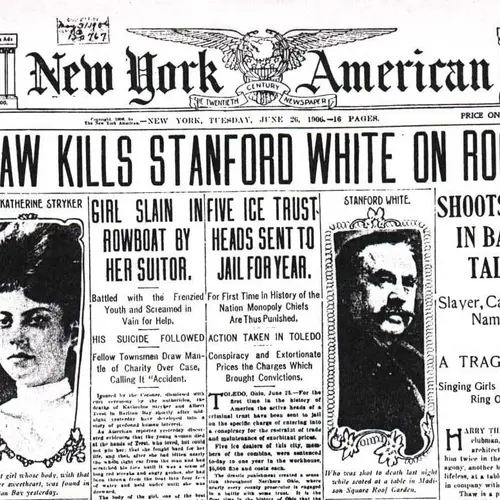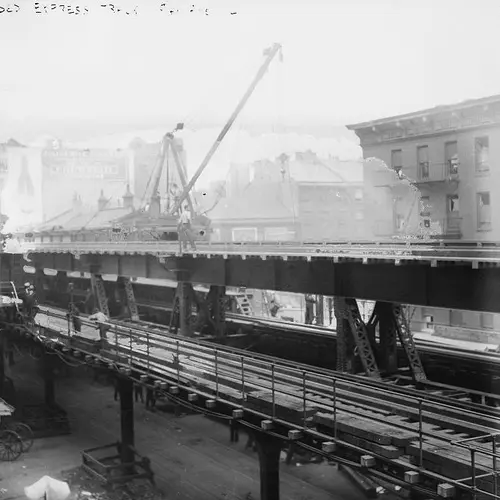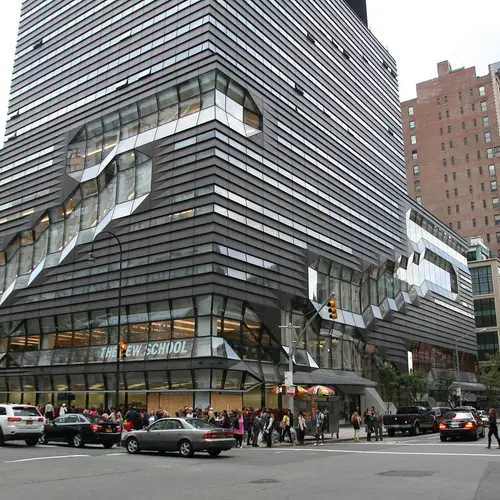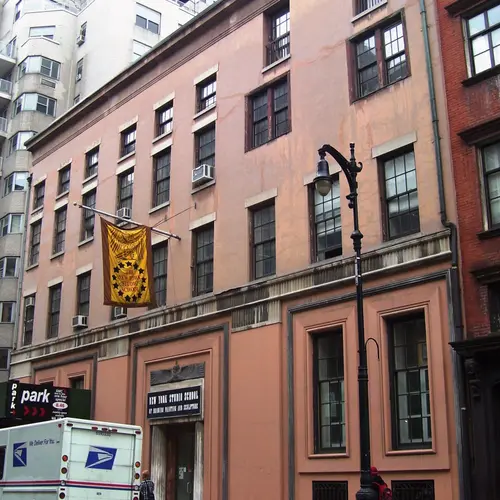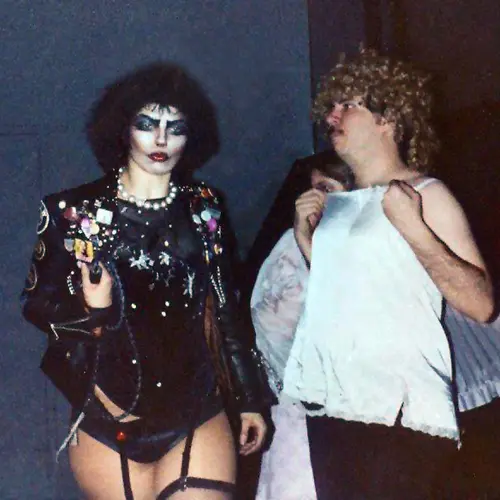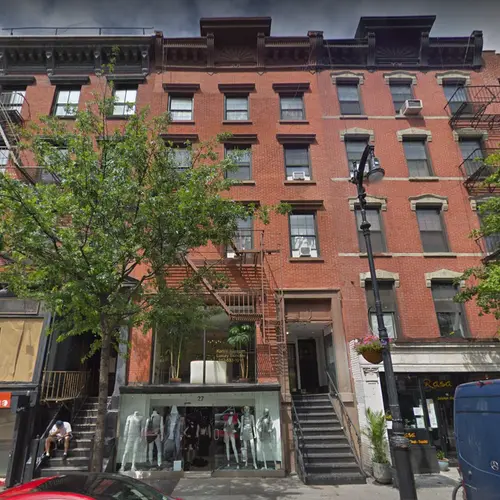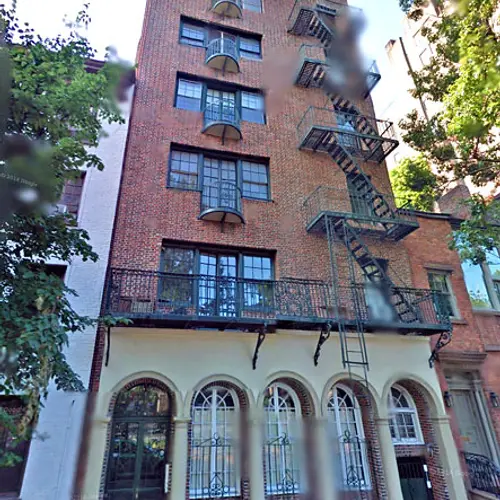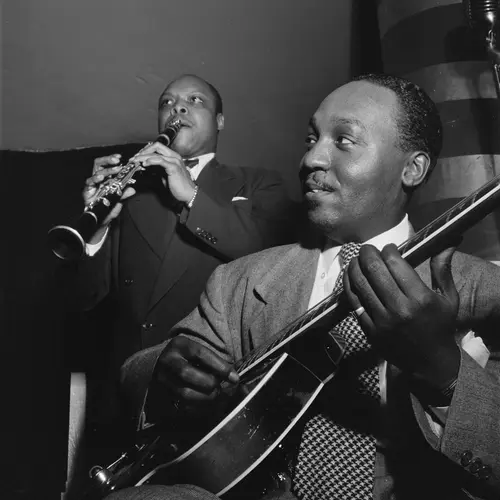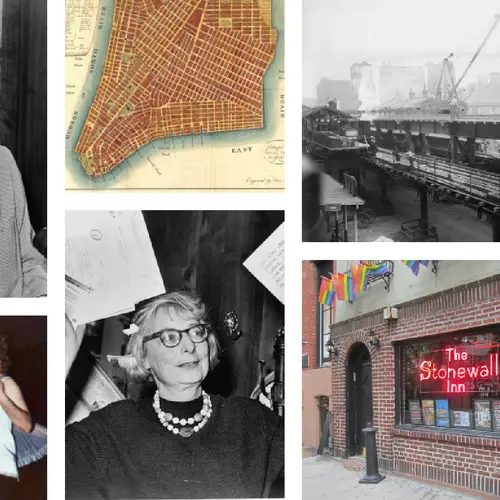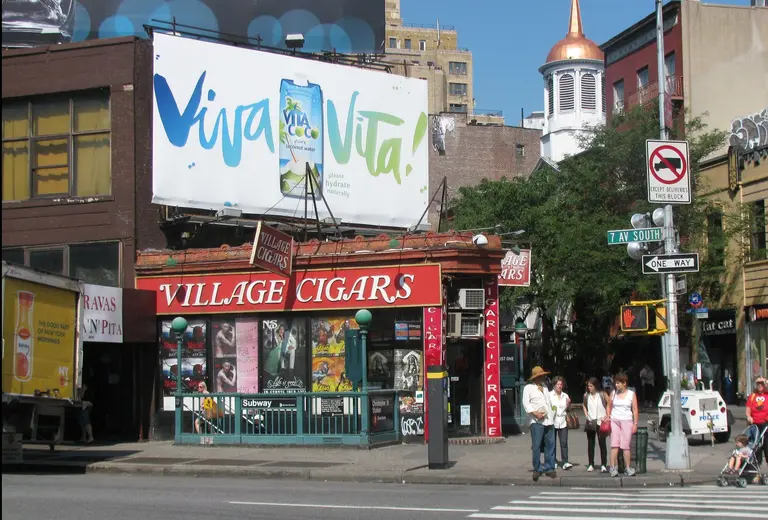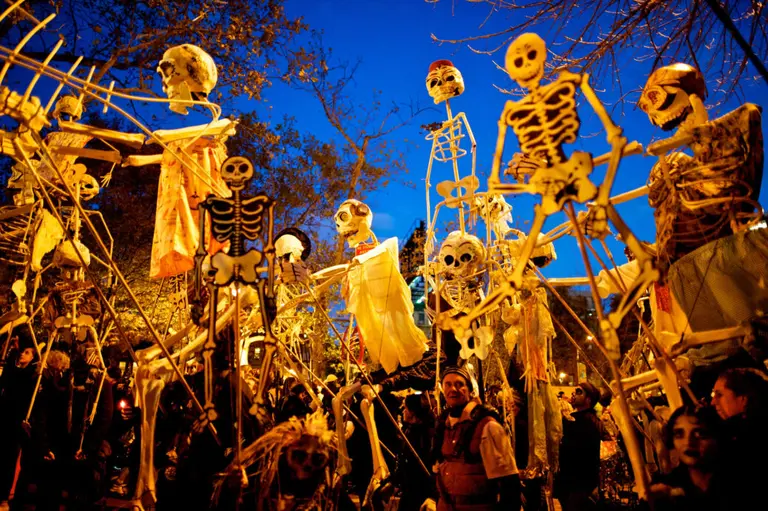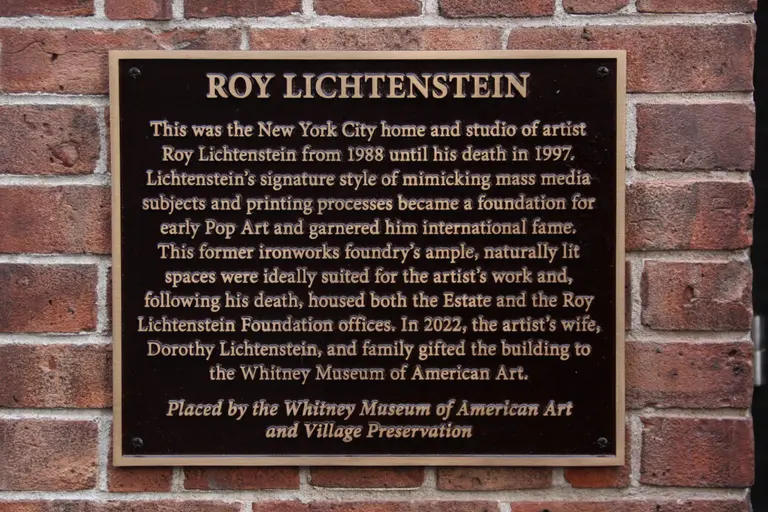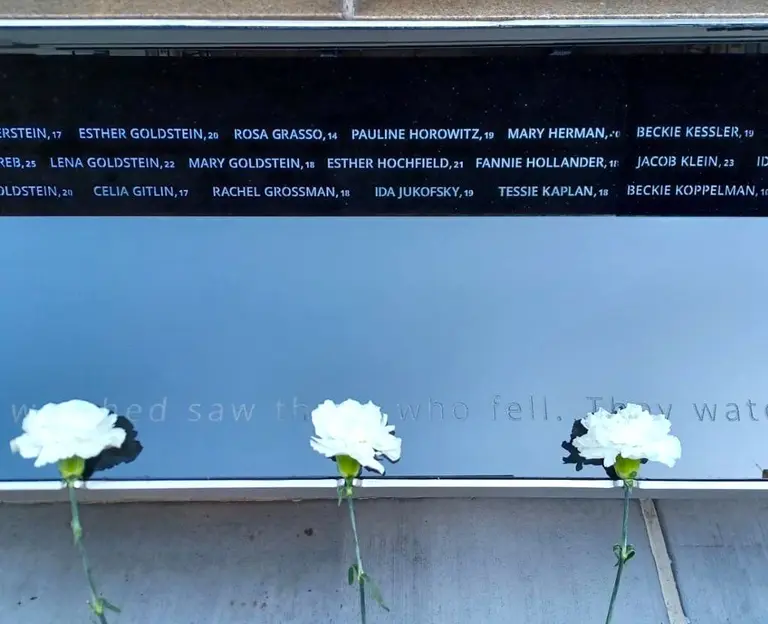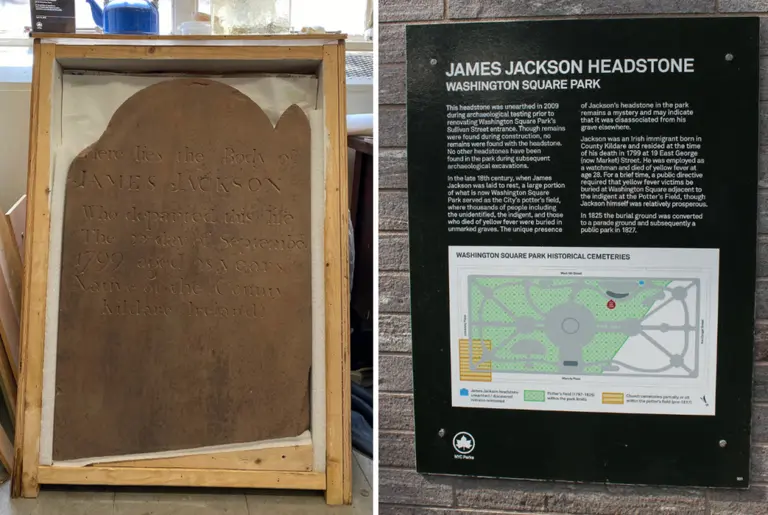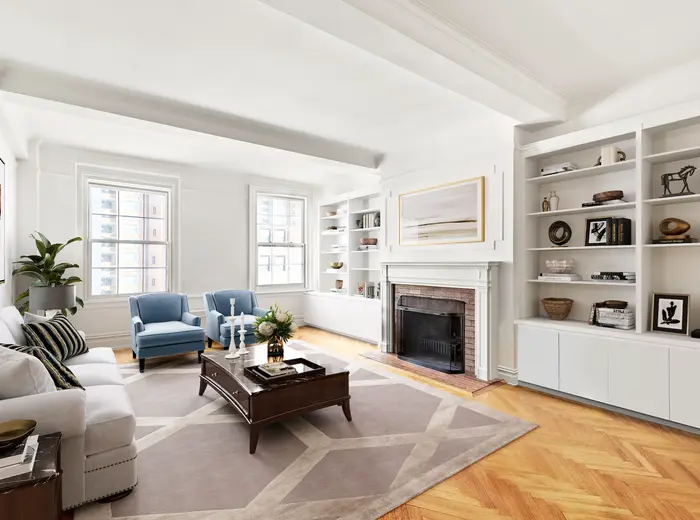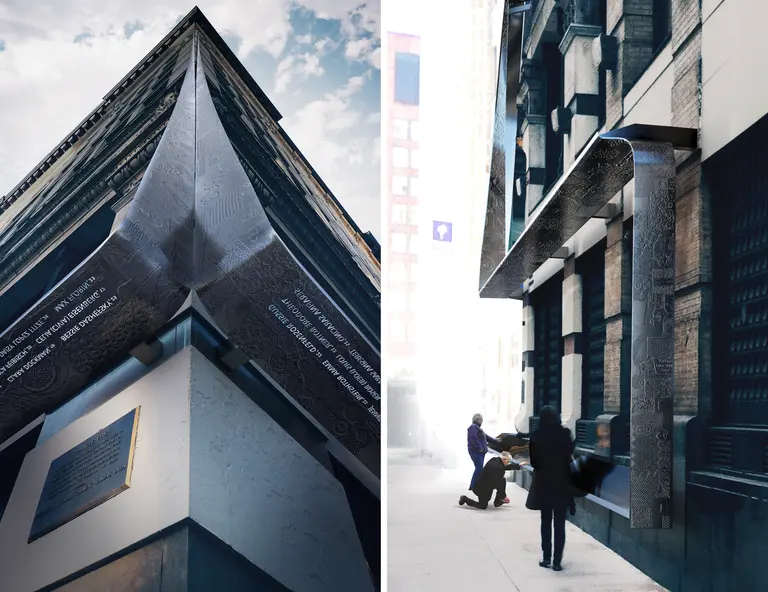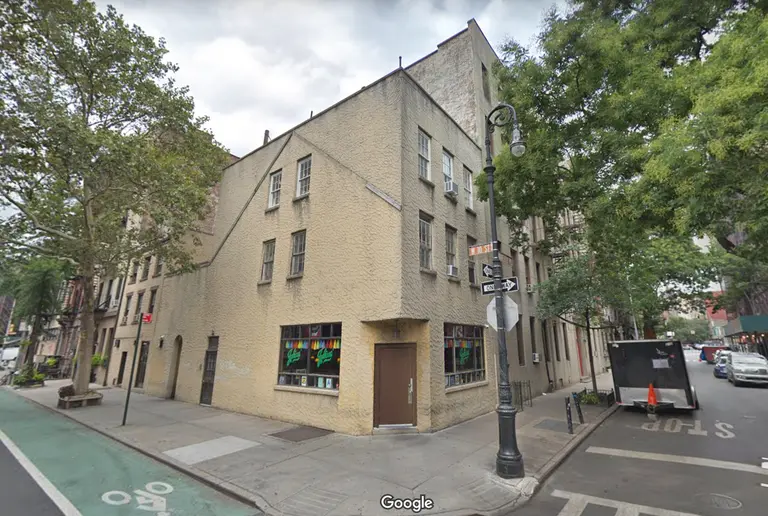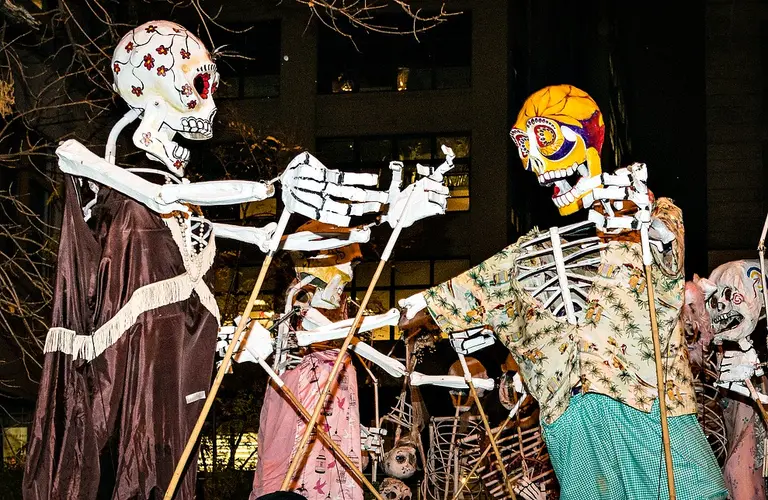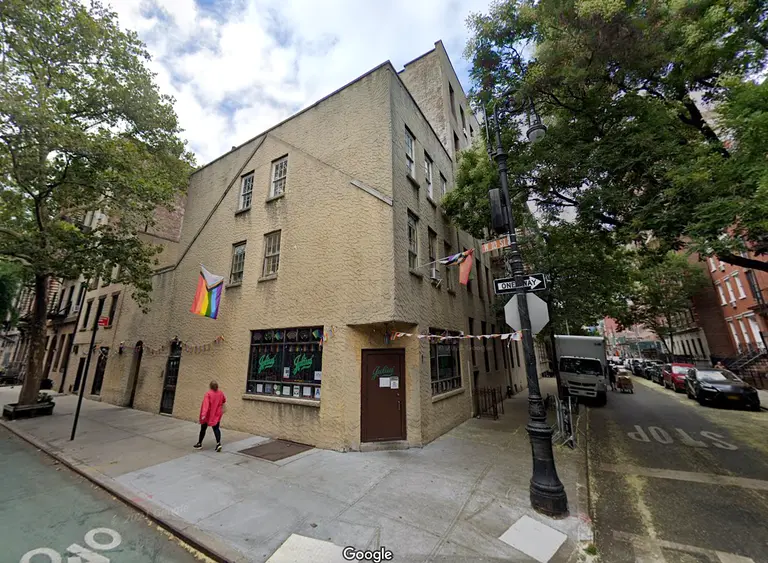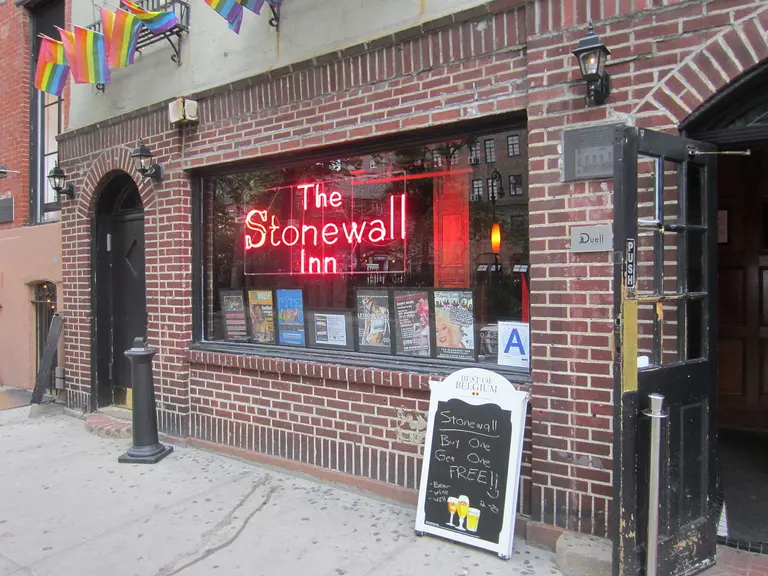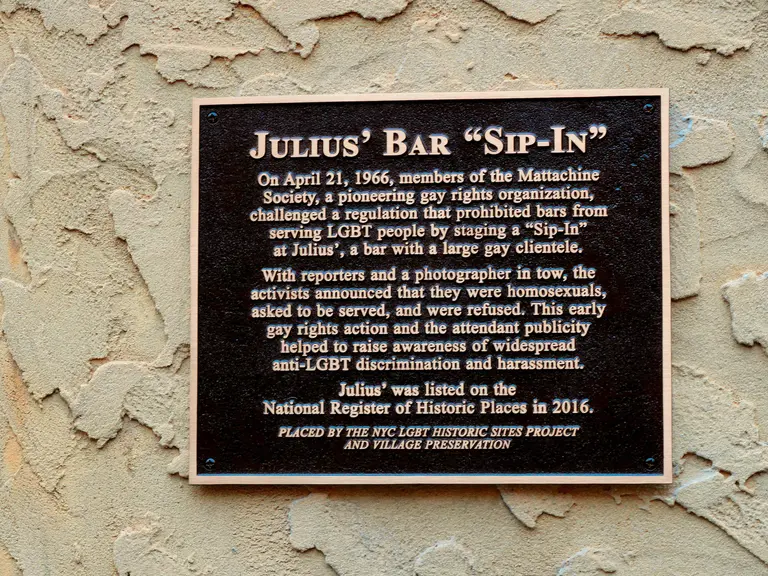13 places in Greenwich Village where the course of history was changed
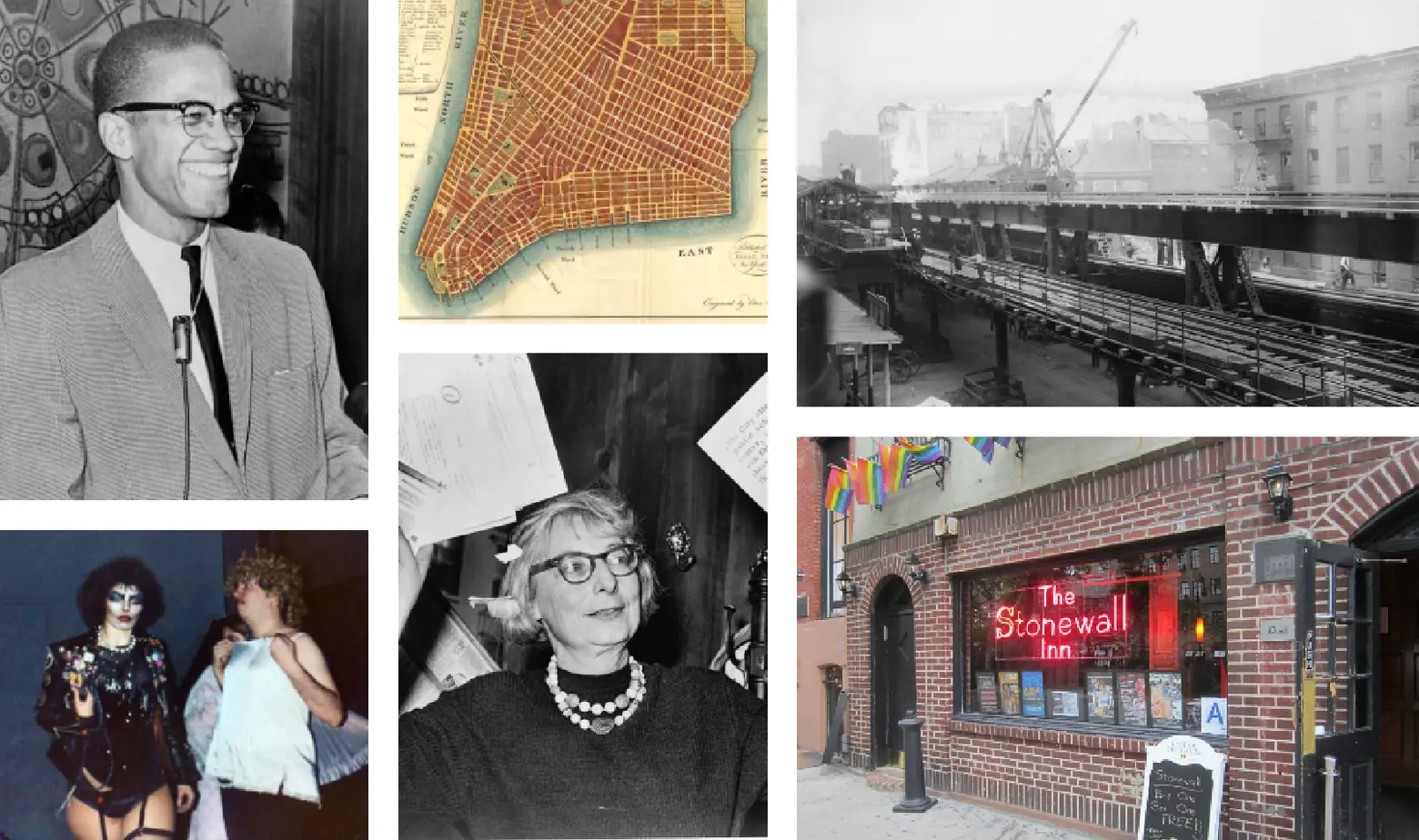
This year marks the 50th anniversary of the designation of the Greenwich Village Historic District. One of the city’s oldest and largest landmark districts, it’s a treasure trove of rich history, pioneering culture, and charming architecture. Village Preservation will be spending 2019 marking this anniversary with events, lectures, and new interactive online resources, including a celebration and district-wide weekend-long “Open House” starting on Saturday, April 13 in Washington Square. Check here for updates and more details. This is part of a series of posts about the Greenwich Village Historic District marking its golden anniversary.
It’s not that often you can pinpoint a time and place and say the course of history was forever changed as a result of it. It’s even less common for such a thing to happen over and over again in one small neighborhood. But from its earliest days, Greenwich Village is where history has been made, much of it within the Greenwich Village Historic District, which lies at its heart. Here are a baker’s dozen of such events located within those one hundred blocks, from the first free black settlement in North America and the birth of the modern LGBT rights movement to the first museum dedicated to contemporary American art and the publication of “The Autobiography of Malcolm X.”
1. The birth of the Manhattan street grid
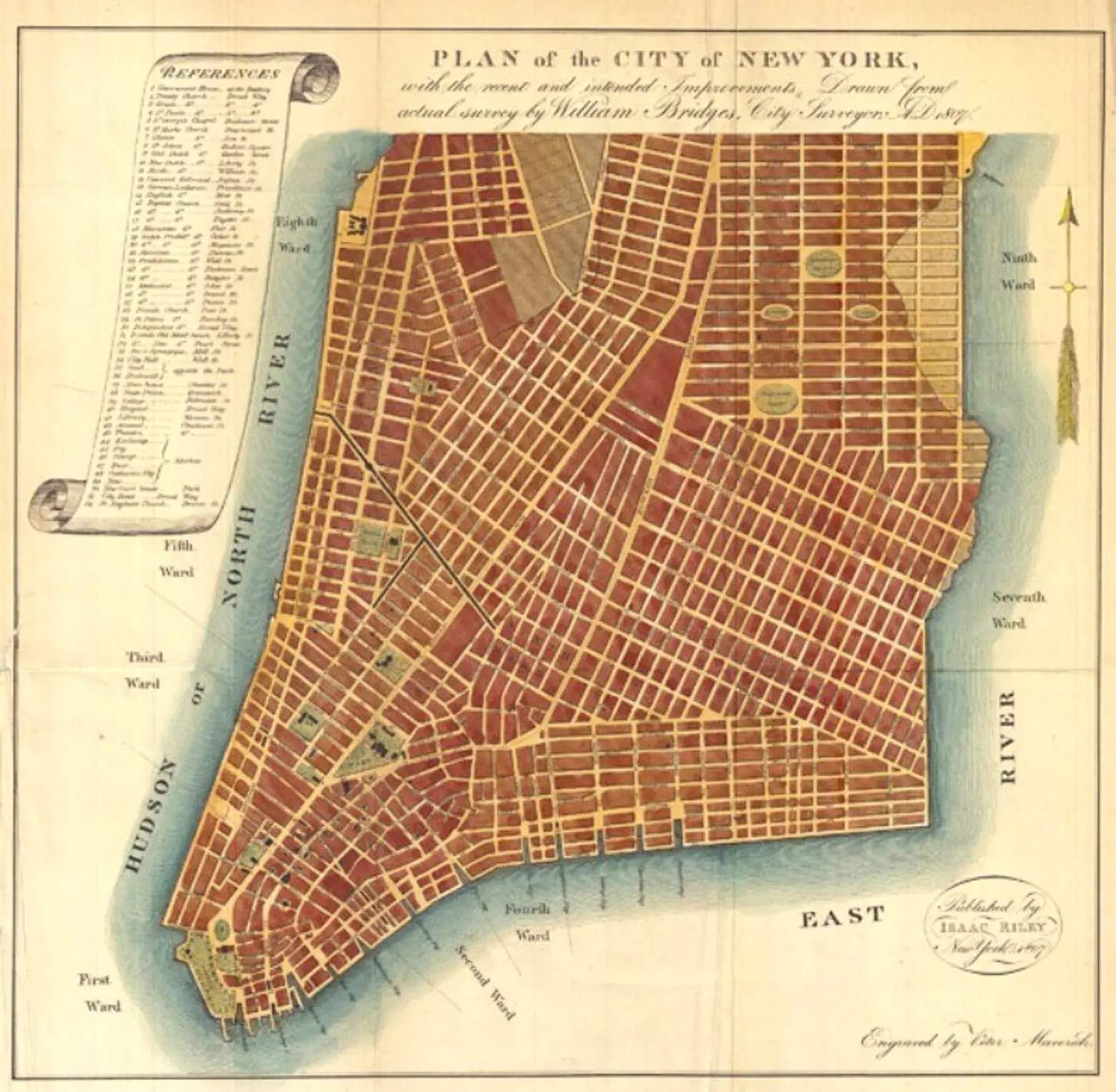 Photo courtesy of Village Preservation
Photo courtesy of Village Preservation
Ironically, the very geometric and regular Manhattan Street Grid was born within the very irregular and eccentric streets of Greenwich Village. More precisely, on the corner of Bleecker and Christopher Streets, at 329 Bleecker Street (which still stands), was the office of John Randal Jr., the surveyor and chief engineer for New York City’s street commissioners. It was here, between 1807 and 1809, that the Commissioners met with Randal and came up with what would become the Commissioners’ Plan of 1811, or more or less the street grid of Manhattan from 14th Street to 155th Street as we know it today.
The Commissioners’ plan has been called “the single most important document in New York City’s development,” and by imposing a regularized plan upon the island of Manhattan, laid the foundation for its rapid development and shaped the look of its streets and neighborhoods. While not the first city street grid plan (which previously tended to develop in a more piecemeal, organic manner), the New York street grid plan was arguably the most influential, later copied throughout the world.
2. Stonewall Riots/Birth of the modern LGBT rights movement
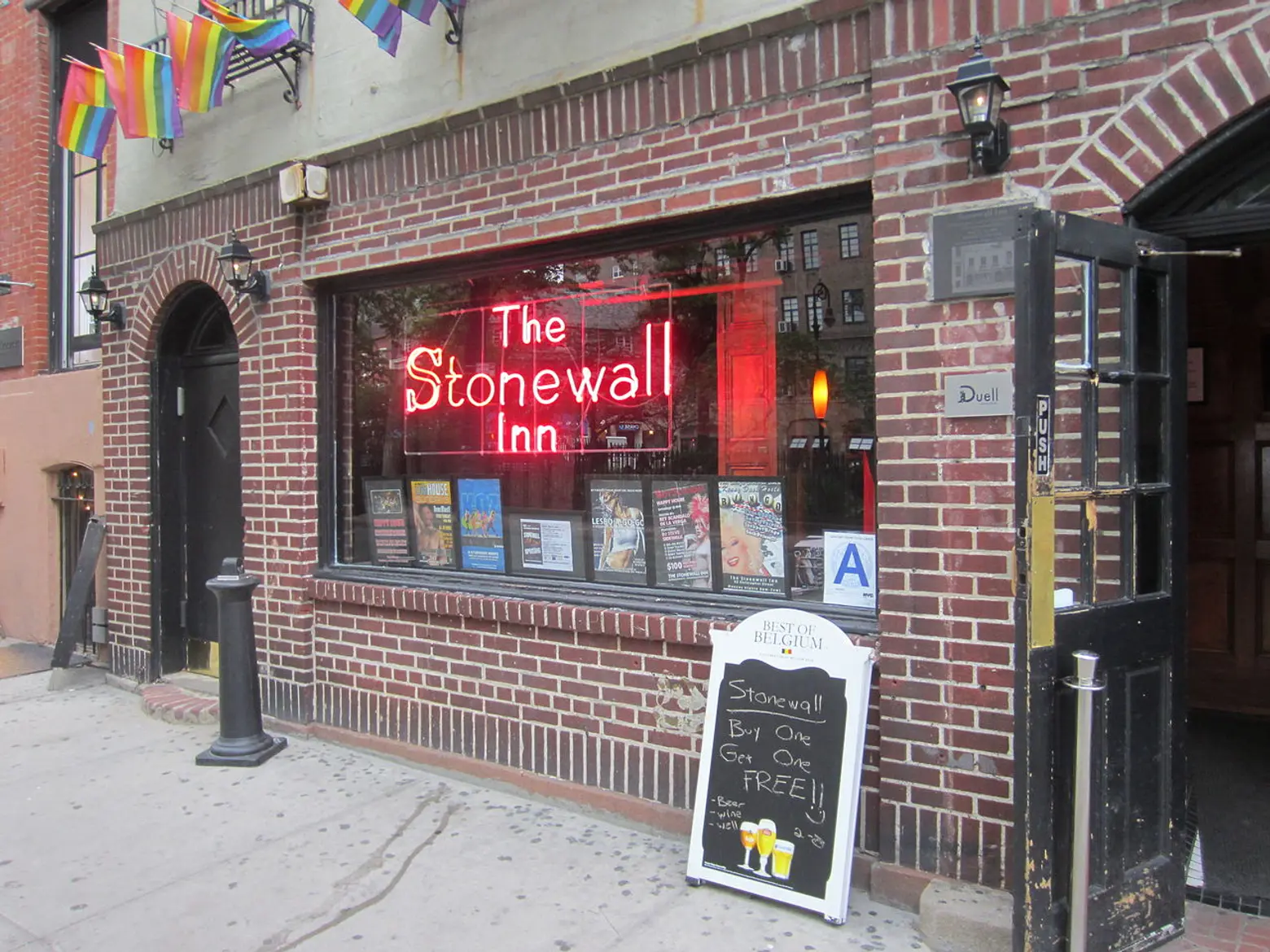 Stonewall Inn, photo via Wikimedia
Stonewall Inn, photo via Wikimedia
At the time, it was derisively referred to as the “hairpin drop heard around the world” (the Daily News headline was actually “Homo Nest Raided, Queen Bees Are Stinging Mad”). But 50 years later, there’s no denying that the resistance to the police raid on the Stonewall Inn at 53-55 Christopher Street and the ensuing nights of riots in late June 1969 had profound reverberations still being felt today.
Police raids on gay bars were nothing new in 1969 – bars which served gay patrons were considered illegal by New York State, so they were operated by the mob, who paid off the police after each raid to allow them to stay open. And while gay activism began to increase in the 1960s, it almost exclusively took the form of polite and discreet protest, on a very modest scale, intended not to offend the mainstream sensibilities which still found LGBT lives inherently disordered and offensive.
All that changed on June 28th. Rather than simply allowing themselves to be arrested, the patrons of the Stonewall Inn fought back, uprooting parking meters, trapping the police inside the bar, and using tactics ranging from lighting fires to pelting the police with coins and rocks. Once word got out about the brazen demonstration of defiance in the face of otherwise routine harassment, LGBT New Yorkers and their supporters gathered for two more nights outside Stonewall, demanding an end to such persecution and the right to live their lives openly and free of discrimination.
The effects were profound. A small, incrementalist movement suddenly transformed into a loud, growing, and unapologetic one. Gay men and lesbians were encouraged to come out and live their lives openly, and starting in New York, a march each year marked the anniversary of what is now often referred to as an uprising. Literally, thousands of cities across the globe now celebrate the anniversary of the Stonewall Riots each year, and countless organizations dedicated to serving or improving the lives of LGBT people are named for the Stonewall Inn.
3. “The Trial of the Century”
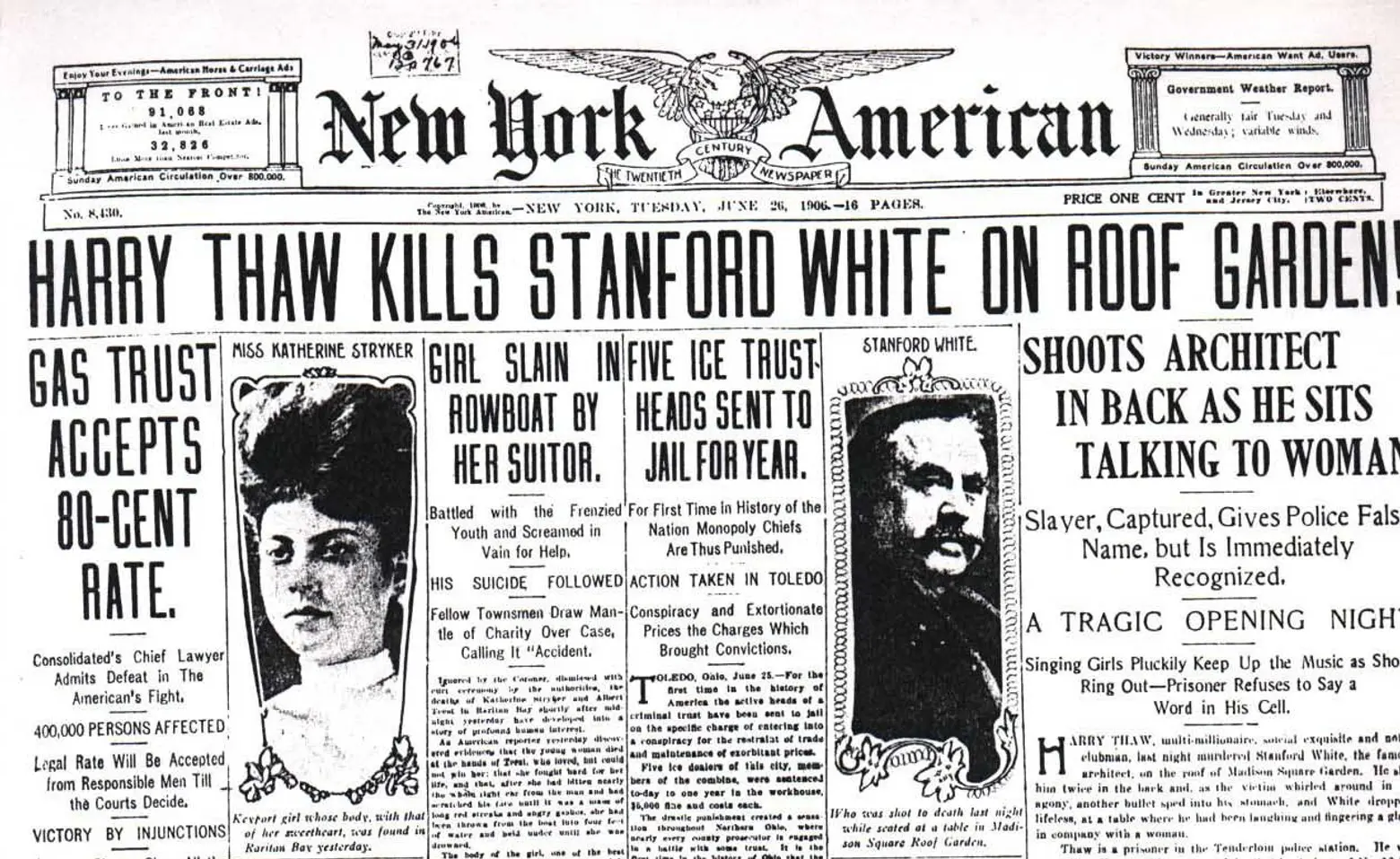 News clipping from the June 26th, 1906 “New York American.”
News clipping from the June 26th, 1906 “New York American.”
It’s a term which has been used many times since, but the original “Trial of the Century” for Gilded Age New York came in 1906 after Pittsburgh millionaire Henry Thaw shot society starchitect Stanford White in front of a crowd of hundreds while dining on the rooftop of Madison Square Garden (then located on Madison Square). The jealous Thaw was enraged over the notoriously lustful (some would also say predatory) White’s prior liaisons with his wife, Evelyn Nesbitt.
The “yellow journalists” of the time, especially William Randolph Hearst’s newspapers, had a field day with the lurid scandal, which involved the upper echelons of New York society and some particularly salacious details. White was condemned as a “sybarite of debauchery, a man who abandoned lofty enterprises for vicious revels” and a “satyr.” The trial took place at the Jefferson Market Courthouse, which at the time covered a district that stretched up to midtown. The combination of sex, celebrity, society, and scandal engendered an unprecedented frenzy of media attention – one which has become an all-too-familiar template for press coverage in the 21st century.
4. First racially integrated nightclub in New York
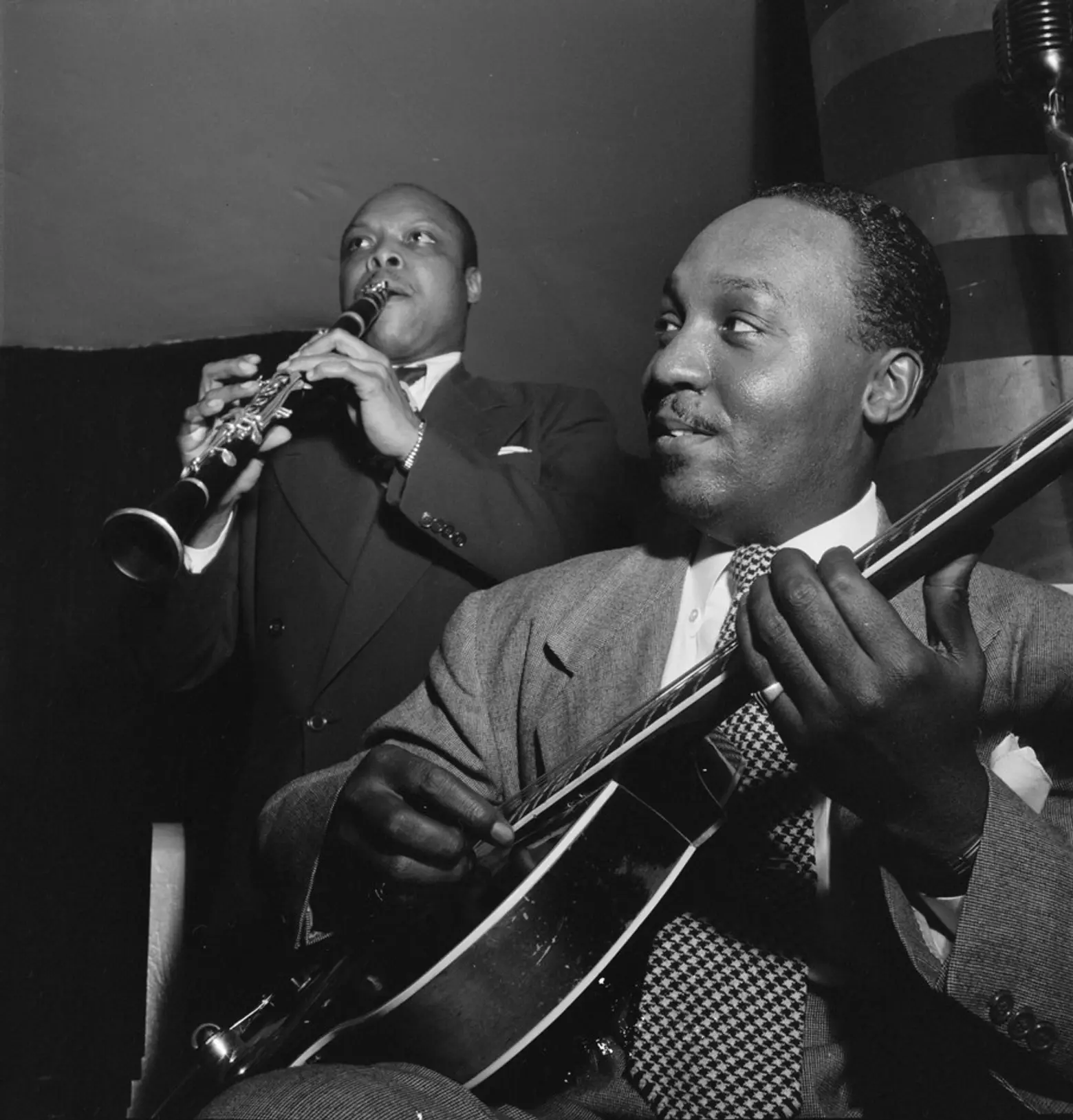 Al Casey and Eddie Barefield at Cafe Society, between 1946 and 1948. Via Wiki Commons.
Al Casey and Eddie Barefield at Cafe Society, between 1946 and 1948. Via Wiki Commons.
Café Society was opened in 1938 by Barney Josephson at 1 Sheridan Square. While clubs with black performers and white audiences were nothing new in New York, Josephson took things a very radical step further, welcoming black and white patrons and performers side by side. While “black and tan” bars had long existed in Greenwich Village – establishments where whites and blacks drank, socialized, and danced together – an above-board performance venue, especially one of the stature of Café Society, where members of all races were welcomed, had been previously unheard of. And at that time could have likely only existed in a place like Greenwich Village.
The effect was profound. Many of the jazz greats of the era flocked here, including Billie Holiday, who gave her first public performance of her anti-lynching lament “Strange Fruit” here. Bayard Rustin–the openly-gay civil rights leader, advisor to Martin Luther King Jr., and architect of the 1963 March on Washington–began his career as a singer and stage performer, frequently appearing at Café Society. It was in this open-minded environment, where people of different races and sexual orientations intermingled, that Rustin made many of his early political connections and formulated many of his ideas about a better and more just world.
5. The church that threw a presidential election
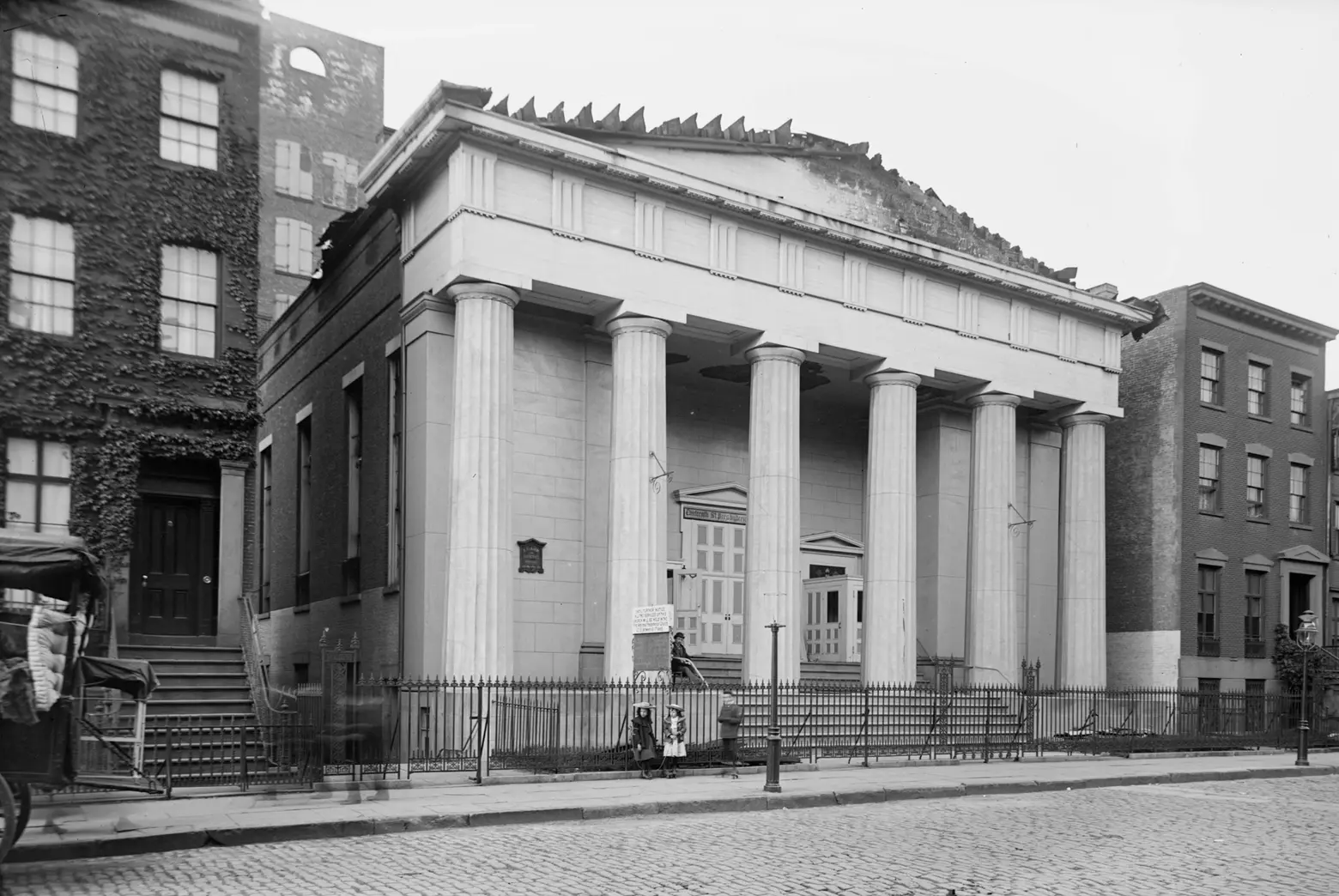 The Thirteenth Street Presbyterian Church in 1902, courtesy of the New-York Historical Society, Robert L. Bracklow Photograph Collection
The Thirteenth Street Presbyterian Church in 1902, courtesy of the New-York Historical Society, Robert L. Bracklow Photograph Collection
One would hardly suspect walking past the serene Greek Revival former church at 141-145 West 13th Street that this edifice was profoundly connected to one of the closest and most contentious Presidential elections in U.S. history. It was a campaign marked by scandal and bitter recriminations, in the midst of which the leader of this Greenwich Village church coined one of the most notorious slurs in American political history, arguably changing the results of a pivotal Presidential election.
In 1884, Democrat Grover Cleveland was running for President against Republican James Blaine. Blaine was embroiled in a bribery and corruption scandal that resulted in many Republicans jumping ship and supporting Cleveland, presenting the possibility of the first Democrat to win the White House since the Civil War. But Republican loyalists pushed back, fanning the flames of a scandal which soon engulfed Cleveland – that he had apparently fathered a child out of wedlock. Seeking to rally their base against the Democratic insurgent, Republicans led by the Rev. Samuel Burchard, leader of the 13th Street Presbyterian Church, gathered before the election to sound the alarm against a potential Democratic victory, warning loyalists not to support the party (in Burchard’s words) of “rum, romanism, and rebellion,” citing the party’s large constituency of Southern former Confederates and northern Catholics (who were thought to be particularly fond of drink).
A Democratic spy at the rally reported to insulting alliteration to the press, which painted Blaine as anti-Catholic. In one of the closest Presidential elections in history, Cleveland won the electoral college by just barely winning New York State’s 36 electoral votes by a mere 1,000 votes cast or 0.1 percent. His edge came from high levels of support in heavily Catholic New York City, whereas he lost to Blaine in predominantly-Protestant Upstate New York. Cleveland would be the only Democrat elected to the White House between 1860 and 1912.
6. The great urban paradigm shift: Jane Jacobs
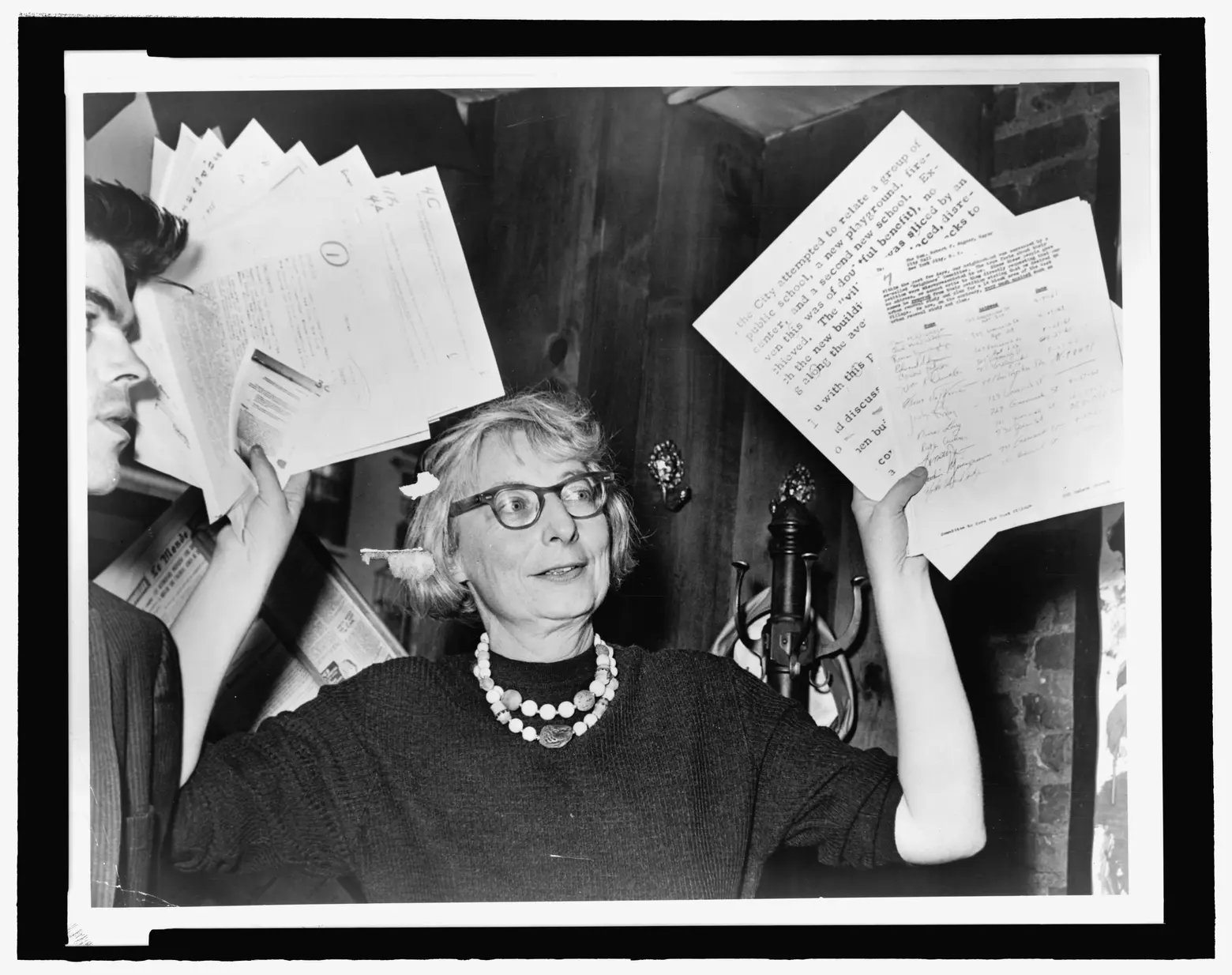 As the chairman of the Committee to save the West Village, Jane Jacobs holds up documentary evidence at a press conference at the Lions Head Restaurant at Hudson & Charles Streets in 1961. Via Wiki Commons.
As the chairman of the Committee to save the West Village, Jane Jacobs holds up documentary evidence at a press conference at the Lions Head Restaurant at Hudson & Charles Streets in 1961. Via Wiki Commons.
In post-World War II America (and indeed much of the industrialized world), traditional older cities were considered anachronisms, ready to be replaced by highway-laced suburbs and radically rebuilt with tall towers surrounded by open space. The dense but low-scale, haphazard, sometimes antiquated pre-war city was considered a breeding ground for crime, poor health, decay, and inevitable decline. In response to this, urban planners like Robert Moses ordered the large-scale demolition of older sections of cities to be replaced or bisected by new motorways and identical complexes of “towers-in-a-park.”
But one unlikely Greenwich Village resident saw the folly in this worldview, and not only challenged it, but arguably changed the fundamental way in which we thought about what makes cities work. Jane Jacobs was a writer who lived at 555 Hudson Street and noticed not only that the urban planners’ vision of the city not staunched its decay, it actually seemed to hasten it. Neighborhoods subject to “urban renewal” didn’t renew, but seemed to disintegrate, as longtime residents were pushed out and the fabric which held communities together – local institutions, common cultural touchstones, and the unique sense of place – were destroyed as part of the process.
Observing what she called the “sidewalk ballet” outside her window on Hudson Street, Jacobs wrote in her highly influential 1961 tome “The Death and Life of Great American Cities” that keys to urban success were a vibrant and active mixture of uses, “eyes on the street” and engaged people at the ground level whose presence deterred crime or decay, spontaneity rather than overly proscribed planning, renewal and reuse of historic buildings which carry meaning for local communities, and giving local communities a voice in their futures. Jacobs and her book led to a fundamental rethinking of what cities needed and what people wanted in their built environment, and her observations proved remarkably spot on. Jacobs’ writings and principles informed everything from land use approval processes in cities throughout the world to the shape of new developments, big and small, around the globe. And in the 58 years since her book, the kind of human-scaled, historic, mixed-use neighborhoods Jacobs touted have become amongst the ‘hottest’ and most desirable places to live in the country.
7. The first free black settlement in North America
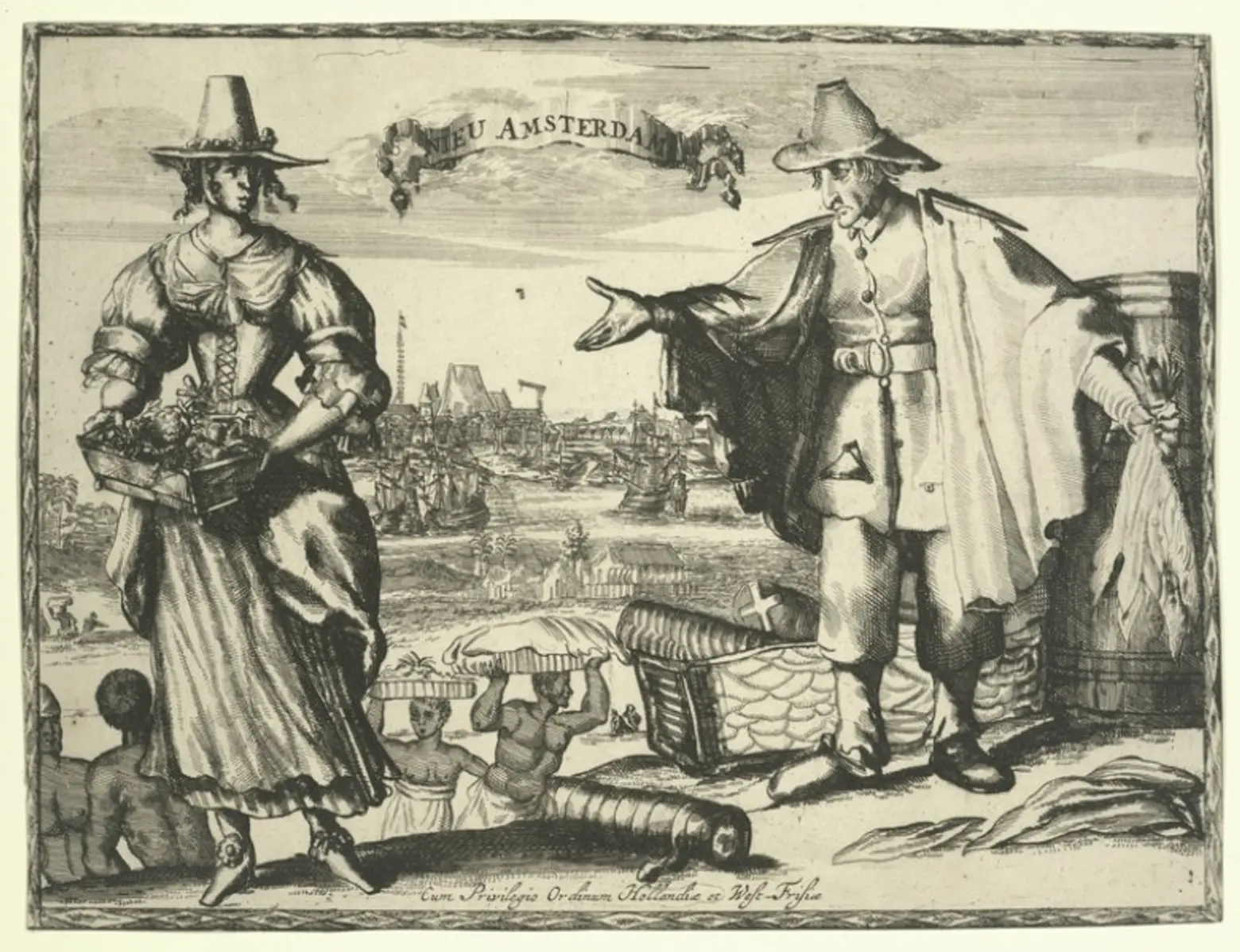 Via Wikimedia
Via Wikimedia
Shortly after the founding of New Amsterdam on the southern tip of Manhattan in 1624, Africans were brought over to the colony. However, unlike the system of slavery which later took hold in the United States under English rule, slavery in the Dutch colony was somewhat closer to indentured servitude, with slaves having certain rights and the ability to earn or win their freedom in some cases.
Starting in the 1640s right up until the English takeover of the colony in 1664, 27 of these African slaves were granted freedom and given land in an area north of the New Amsterdam colony which came to be known as “the Land of the Blacks.” This first settlement of freed blacks in North America ran up the center of the island, covering parts of today’s Tribeca, Soho, Chinatown, the Lower East Side, the East Village, and Greenwich Village. Two of the former slaves were women, both widows, including one named Marycke who was among the very first grantees and the first to be given land in what would today be the Greenwich Village Historic District, on the western edge of Washington Square.
The land granted to the freed blacks was difficult to farm and they had to contend with raids by Native Americans from the north. More challenging, however, was the takeover of the colony by the English, who did not recognize many of the rights which had been granted to the black farmers and eventually took possession of all these lands.
8. The first elevated train
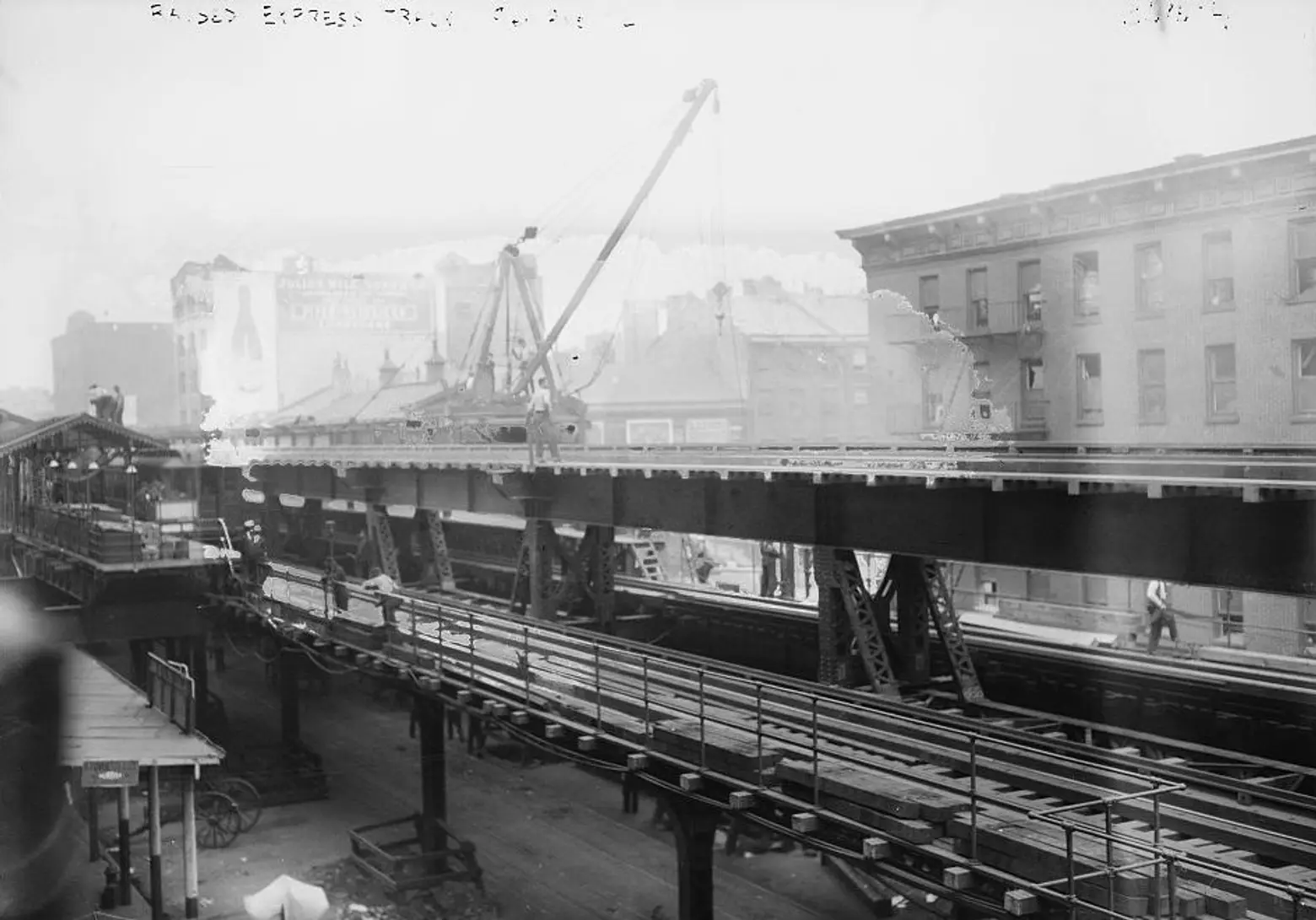 The Ninth Avenue El near 14th Street c. 1914. Via Bain Collection, Library of Congress.
The Ninth Avenue El near 14th Street c. 1914. Via Bain Collection, Library of Congress.
The Ninth Avenue Elevated Railway, or El, began operation in 1868, with a charter to run from Battery Place to 30th Street, through the West Village. London had an earlier aboveground railway, but it ran on a series of brick viaducts, whereas the Ninth Avenue El ran on just a steel track and supports. In fact, the initial version was more or less an early prototype for what we would today call a monorail – it ran in a loop on a single track above a single row of columns. Pulled along by a cable, the engineering marvel became known as “the One-Legged Railroad,” and allowed New York City (then just the island of Manhattan) to expand rapidly northward during those booming years of the industrial revolution and mass immigration which followed the Civil War. In Greenwich Village, the Ninth Avenue Elevated ran along Greenwich Street, now considered a quiet picturesque thoroughfare bisecting the West Village, but in the late 19th century, it was a rough and tumble amalgam of residential, industrial, and maritime life.
Elevated trains allowed dramatically quicker transit above increasingly congested city streets, which at the time were filled with horses, carts, streetcars, and people. Elevated rail lines, which quickly became common throughout America and the world, allowed mass transit unencumbered by traffic to be inserted into growing and densely built-up cities, allowing their rapid expansion in a way which would have previously been impossible.
The Ninth Avenue El was dismantled in 1940, but you can still see evidence of it at 128 Charles Street, a tenement built in 1881 at the corner of Greenwich Street. Between the third and fourth floors is a stone marker with “Charles Street” and “Greenwich Street” carved into it abutting the intersection. The sign is difficult to see and read at street level, but for the passenger on the Ninth Avenue El in the late 19th or early 20th century, it was a welcome indicator of the train’s location and progress.
9. The first courses in African-American Studies and Women’s Studies
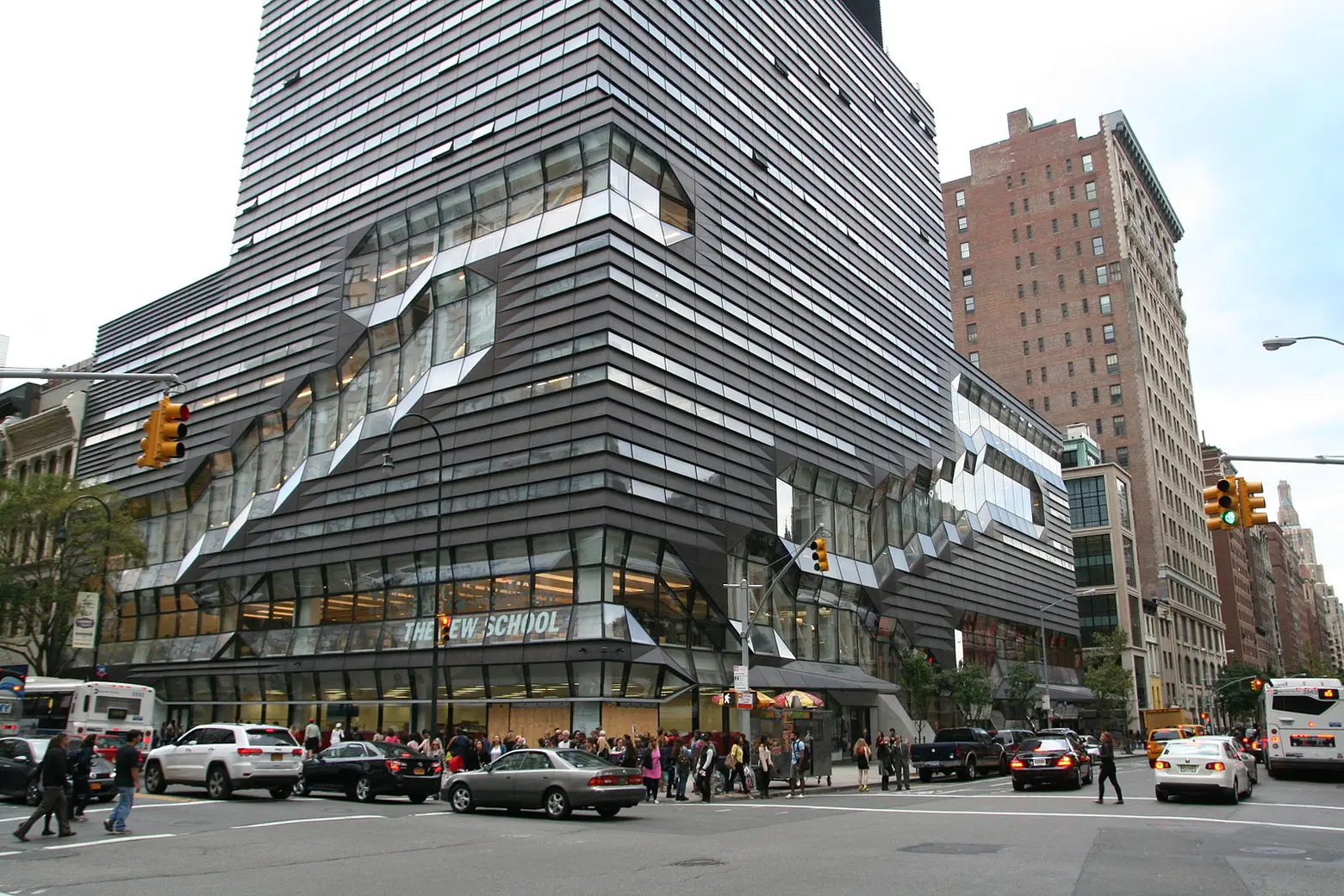 The New School today via Wiki Commons
The New School today via Wiki Commons
Founded 100 years ago, The New School broke new ground from the very beginning. “Frustrated by the intellectual timidity of traditional colleges,” the school’s founders, according to its website, “set out to create a new kind of academic institution, one where faculty and students would be free to honestly and directly address the problems facing societies in the 20th century… to bring together scholars and citizens interested in questioning, debating, and discussing the most important issues of the day.”
The school became a harbor for intellectuals fleeing Nazi Germany and anti-left persecution in the United States, and featured courses taught by an impressive array of thought leaders including John Maynard Keynes, Margaret Mead, Martha Graham, Frank Lloyd Wright, Aaron Copland, and W. H. Auden. But one of the school’s most important legacies is its introduction to the world of the very first African-American Studies course in 1948, taught by none other than W.E.B. du Bois. And in 1962, the first college course devoted to Women’s History in the United States was taught here by Gerda Lerner. Such studies have now of course become a standard part of American academia.
10. The first museum dedicated to contemporary American art
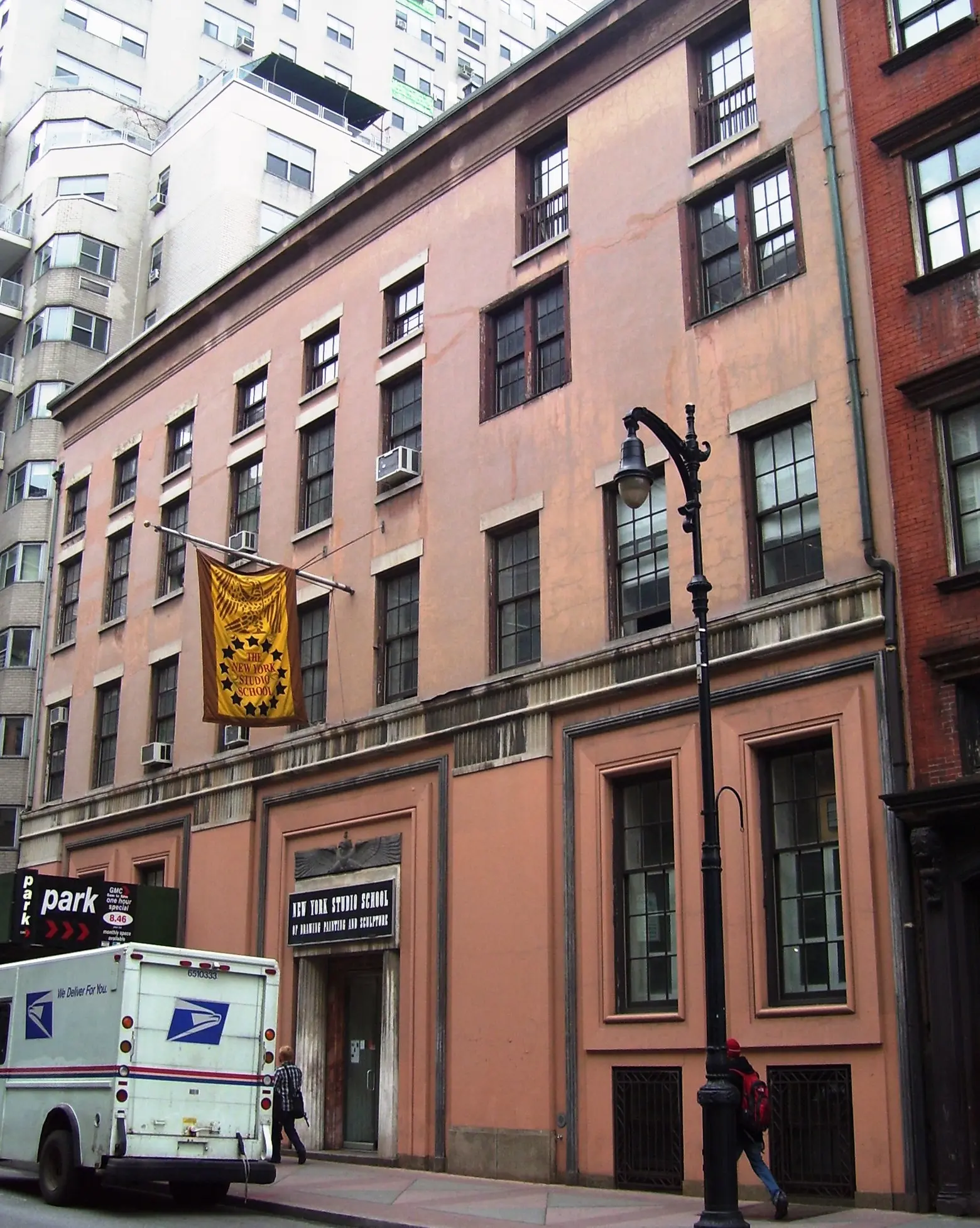 The building that today houses the New York Studio School, once the first home of the Whitney. Via Wiki Commons.
The building that today houses the New York Studio School, once the first home of the Whitney. Via Wiki Commons.
Since New York has been the center of the art world for nearly three quarters of a century, it hardly seems like a radical idea now. But establishing a museum dedicated to contemporary American artists was not only pioneering but controversial when Whitney Museum founder Gertrude Vanderbilt Whitney was laying the groundwork for doing so in the early 20th century.
According to the Whitney Museum’s website, at the beginning of the 20th century, artists with new ideas or exploring new forms found it nearly impossible to exhibit or sell their work in the United States. Mrs. Whitney, an heiress and sculptor herself, began purchasing and showing the work of such artists, becoming the leading patron of American art from 1907 until her death in 1942.
In 1914, she founded the Whitney Studio in Greenwich Village, presenting exhibitions by living American artists whose work had been shunned or ignored by the art establishment. According to the Whitney, by 1929 she had assembled a collection of more than 500 works, which she offered with an endowment to the Metropolitan Museum of Art. But in a move indicative of the attitudes towards contemporary American art at the time, the Met refused the offer. So Whitney set up her own museum, designed to focus exclusively on the art and artists of this country. The Whitney Museum of American Art was founded in 1930, and opened in 1931 at 8 West Eighth Street in Greenwich Village, in a building occupied since the 1950s by the Studio School of New York. After stints in Midtown and the Upper East Side, in 2015 the Whitney returned to Greenwich Village with a new home on Gansevoort Street. Since the Whitney’s establishment, dozens of museums now focus on contemporary American art, while American artists have for generations dominated western art.
11. First “Rocky Horror” midnight show
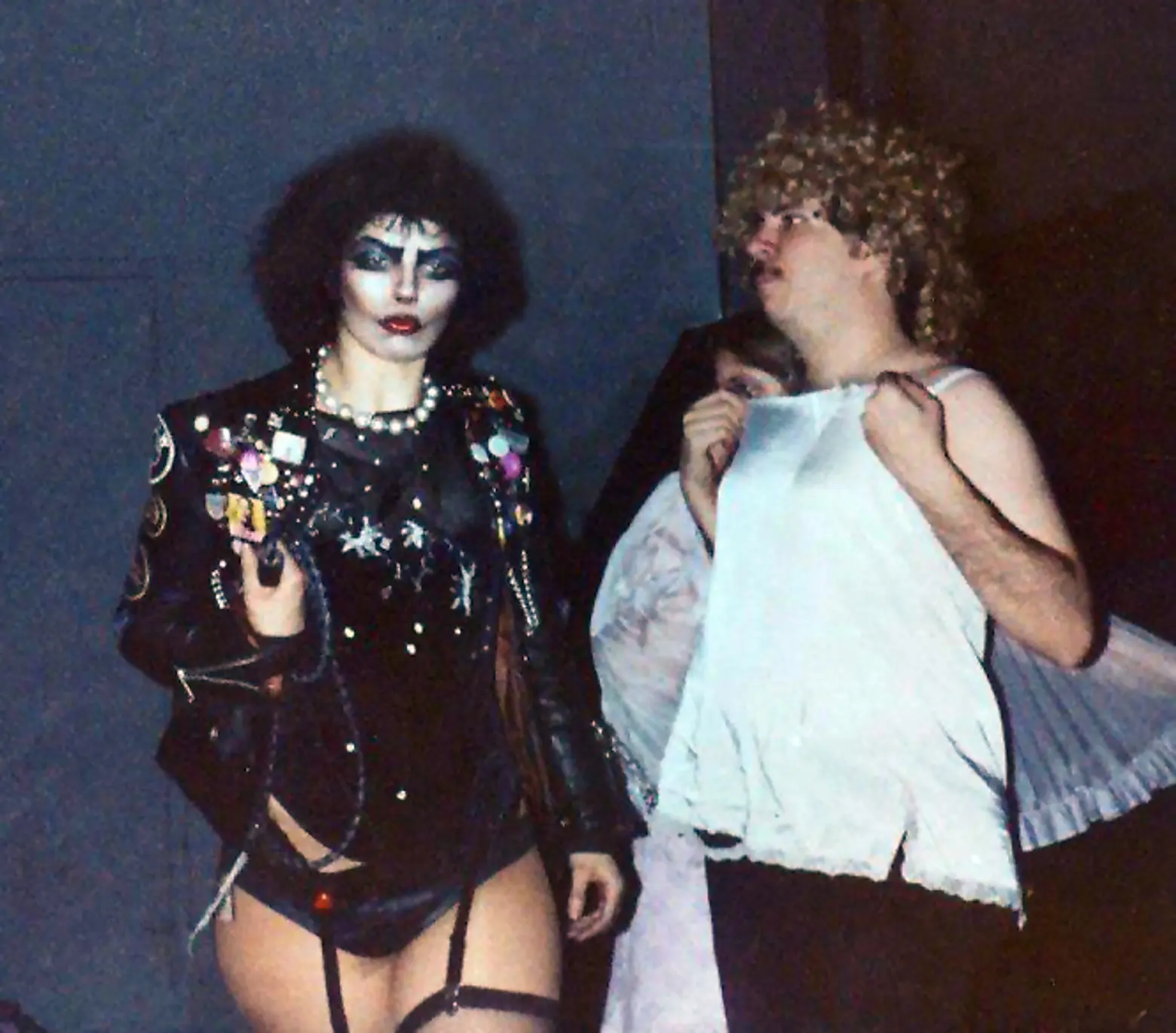 Dori Hartley and Sal Piro, who originally ran the “Rocky Horror” performance groups, at the Waverly Theatre in New York in 1977, via Wiki Commons
Dori Hartley and Sal Piro, who originally ran the “Rocky Horror” performance groups, at the Waverly Theatre in New York in 1977, via Wiki Commons
Like a lot of cult classics, the “Rocky Horror Picture Show” was kind of a flop when it was first released in 1975. But the film’s remarkable longevity can be attributed to a series of midnight showings, which began at the Waverly Theater (now the IFC Film Center) on Sixth Avenue and 3rd Street in 1976. It was in fact the Waverley’s then-manager Denise Borden who made keeping the film alive a personal mission and a unique experience, beginning the practice of playing the film’s soundtrack before the show and allowing the audience to “participate” by shouting, jeering, throwing objects, dressing up as characters from the film, and performing on stage. This iteration of the “Rocky Horror Picture Show” then became standard fare across the country and around the world.
Thanks in large part to the midnight showings, the “Rocky Horror Picture Show” became the longest running theatrical release in film history. In 2005, it was selected by the Library of Congress for preservation in the U.S. National Film Registry.
12. Publication of “Ulysses”
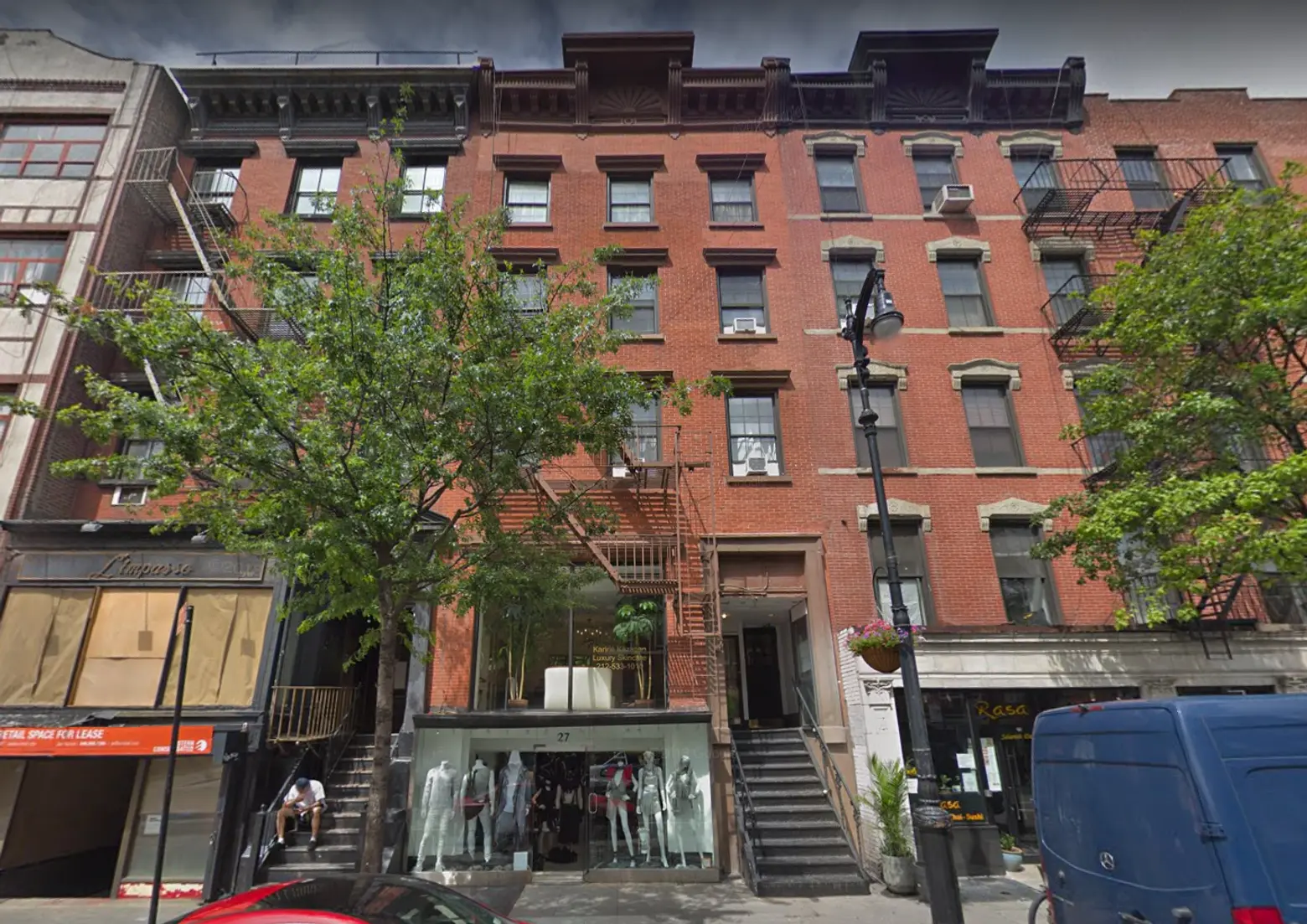 Google Street View of 27 West 8th Street today
Google Street View of 27 West 8th Street today
Few pieces of modern literature are considered more transformative, or were more controversial, than James Joyce’s “Ulysses.” The modern reworking of Homer’s “The Odyssey,” it is generally considered one of the greatest works of writing in history, and has been dubbed “a demonstration and summation of the entire movement” of modernism in literature. Joyce’s champion, T.S. Elliot, said of Ulysses “I hold this book to be the most important expression which the present age has found; it is a book to which we are all indebted, and from which none of us can escape.”
The novel’s first publication was in serialized form in 1918 in a radical Greenwich Village literary magazine known as “The Little Review,” whose offices were located at 27 West 8th Street. However, the publication of the racy, stream-of-consciousness work was ruled obscene by U.S. courts in 1921 and effectively banned from publication or distribution in the United States until the 1930s.
13. “The Autobiography of Malcolm X”
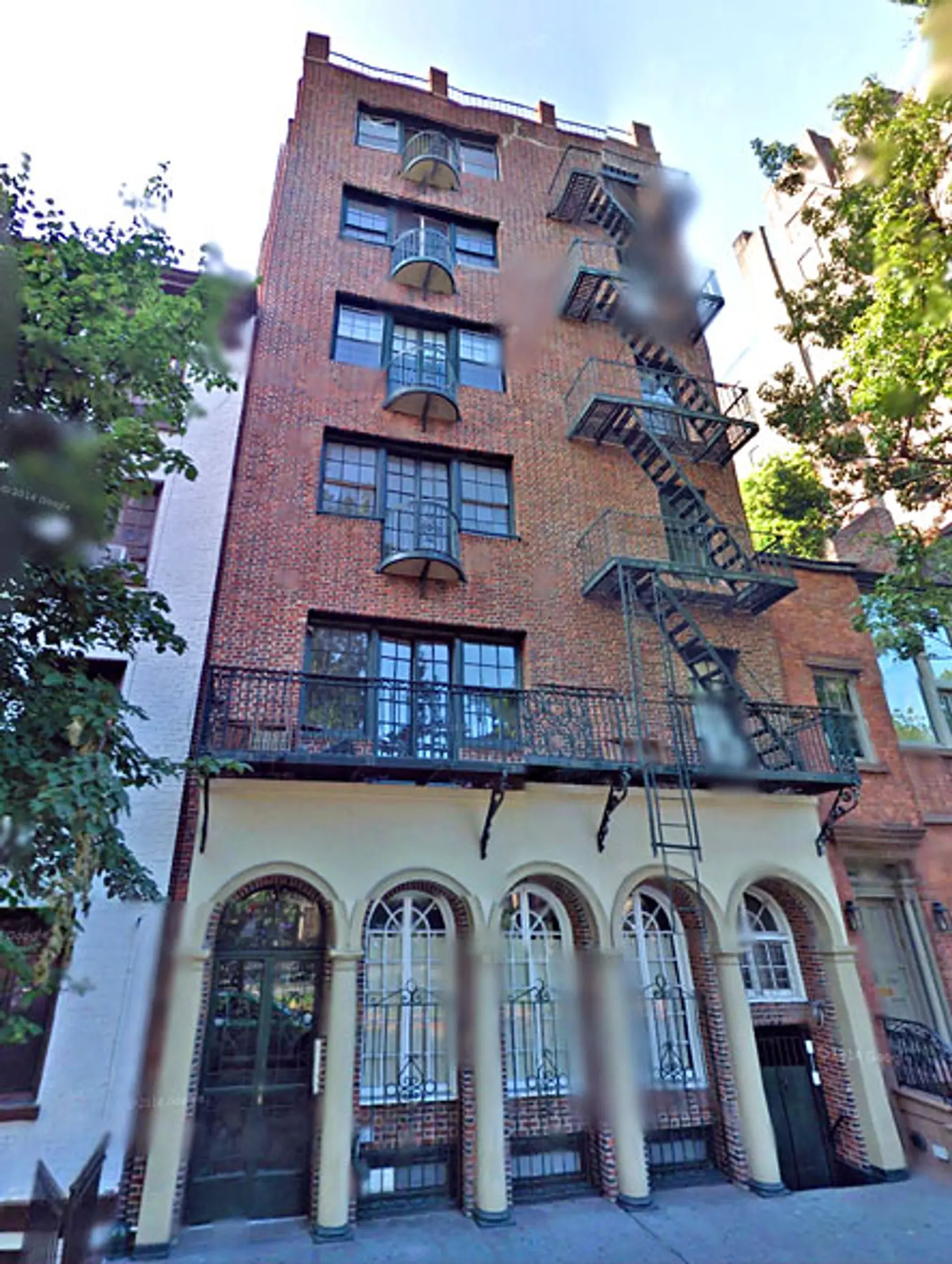
92 Grove Street today, via CityRealty
The factor perhaps most responsible for shaping the public perception of Malcolm X and his place in history is “The Autobiography of Malcolm X,” published just after his assassination in 1965. The spiritual conversion narrative, which charts the civil rights leader’s break with the Nation of Islam and ultimately adopting a more welcoming vision of race relations, was co-written by author Alex Haley.
Haley constructed the book from more than 50 interviews he conducted with Malcolm X between 1963 and 1965, all of which took place at his writing studio at 92 Grove Street. The book became a literary classic, and is considered one of the essential works about a 20th century historic figure.
+++

For updates and more details about the Greenwich Village Historic District 50th anniversary and a full roster of events, click here >>
+++
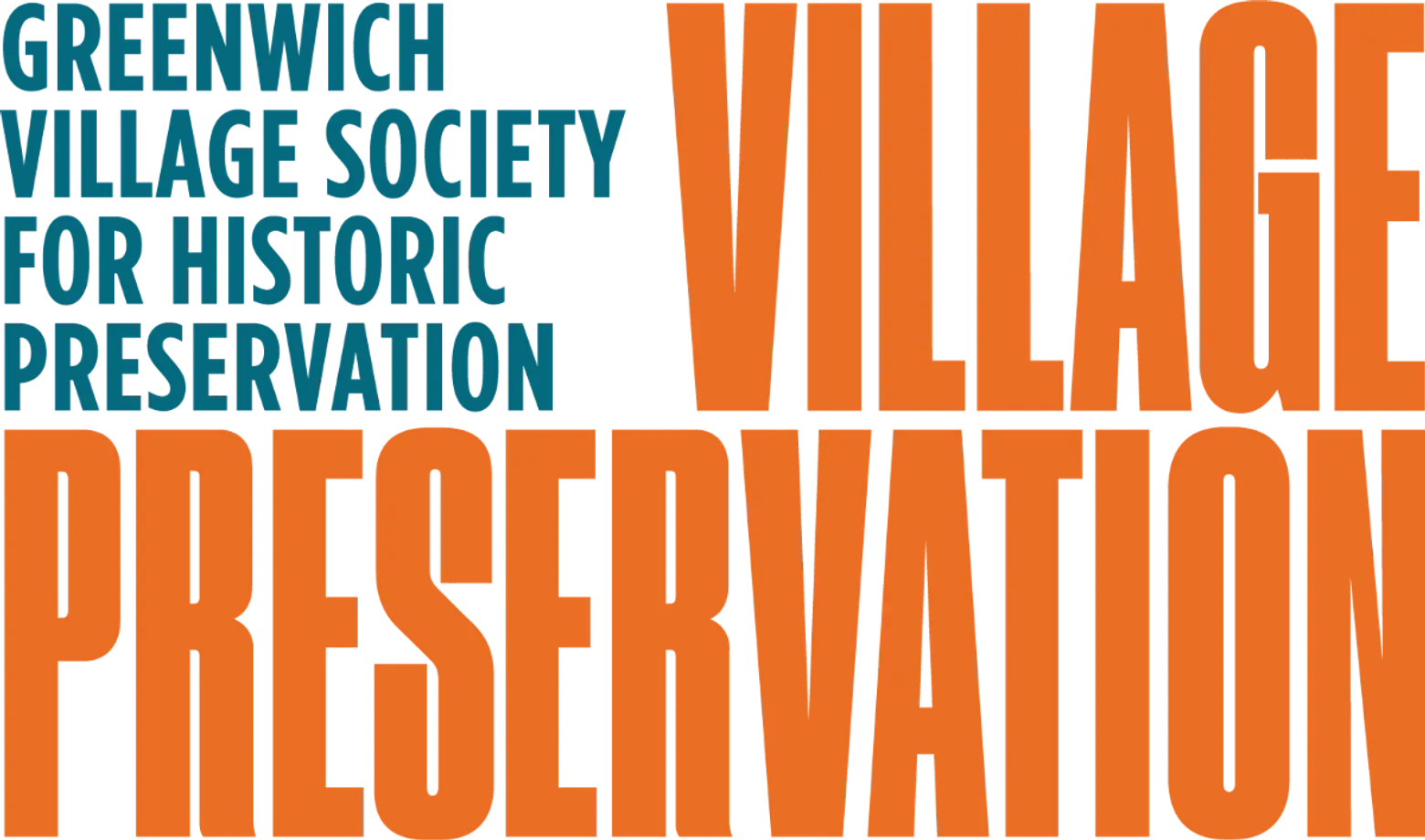
This post comes from Village Preservation. Since 1980, Village Preservation has been the community’s leading advocate for preserving the cultural and architectural heritage of Greenwich Village, the East Village, and Noho, working to prevent inappropriate development, expand landmark protection, and create programming for adults and children that promotes these neighborhoods’ unique historic features. Read more history pieces on their blog Off the Grid
